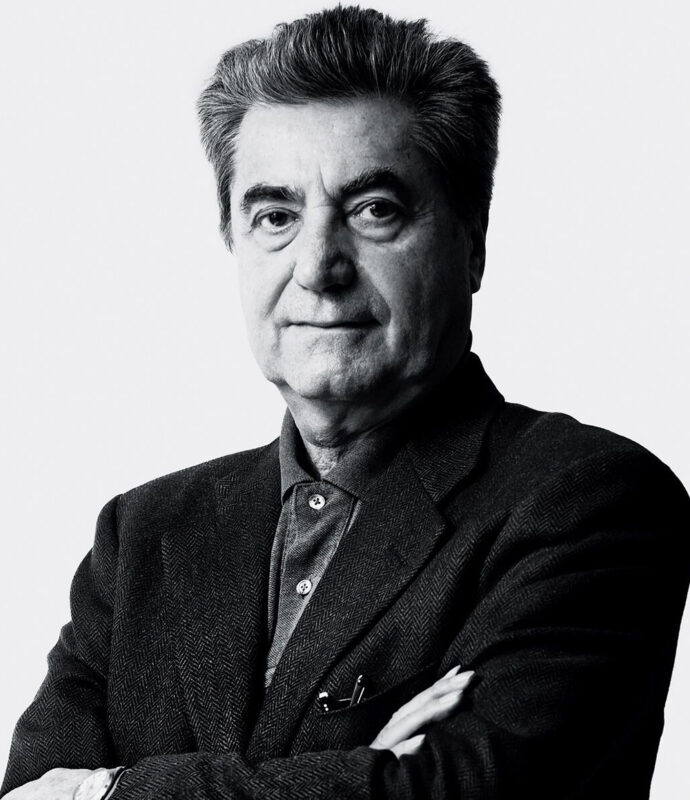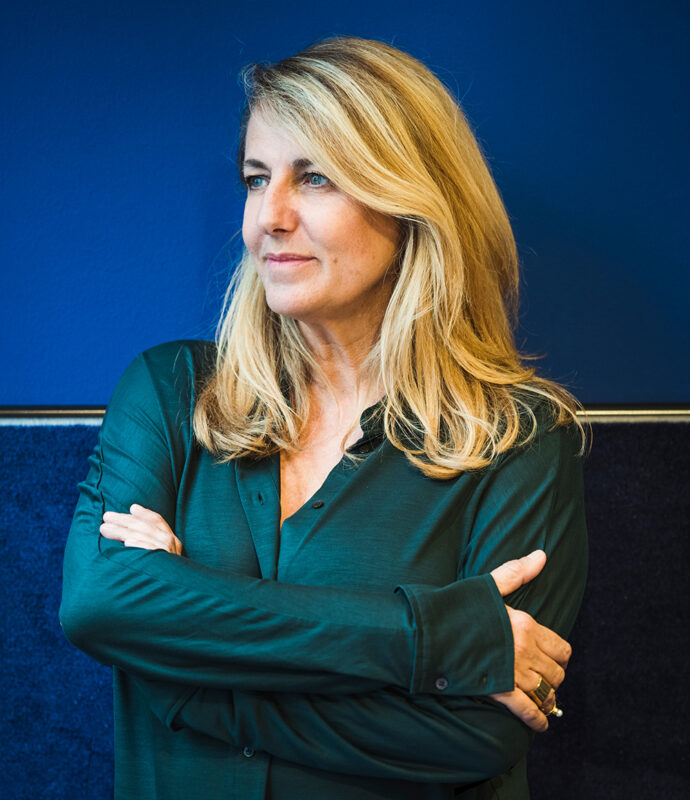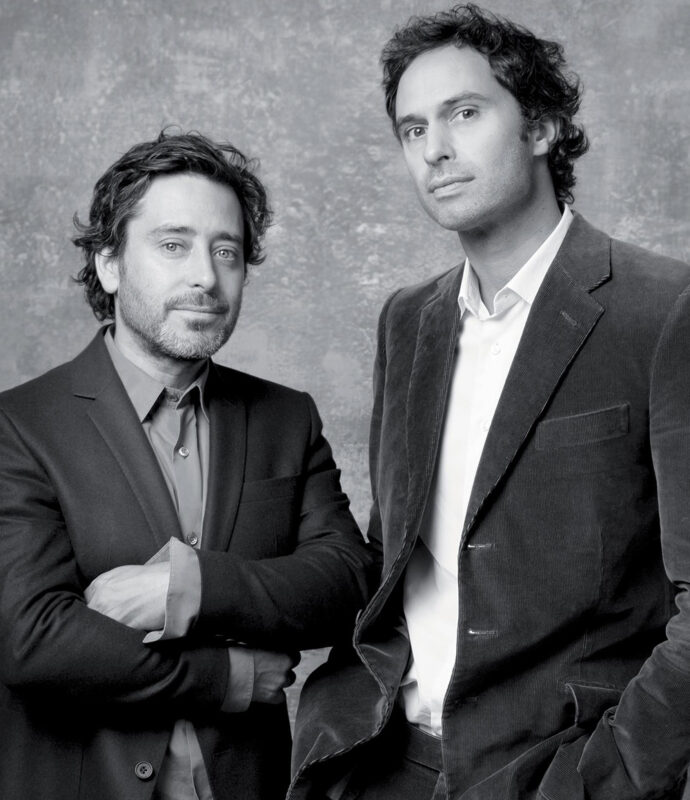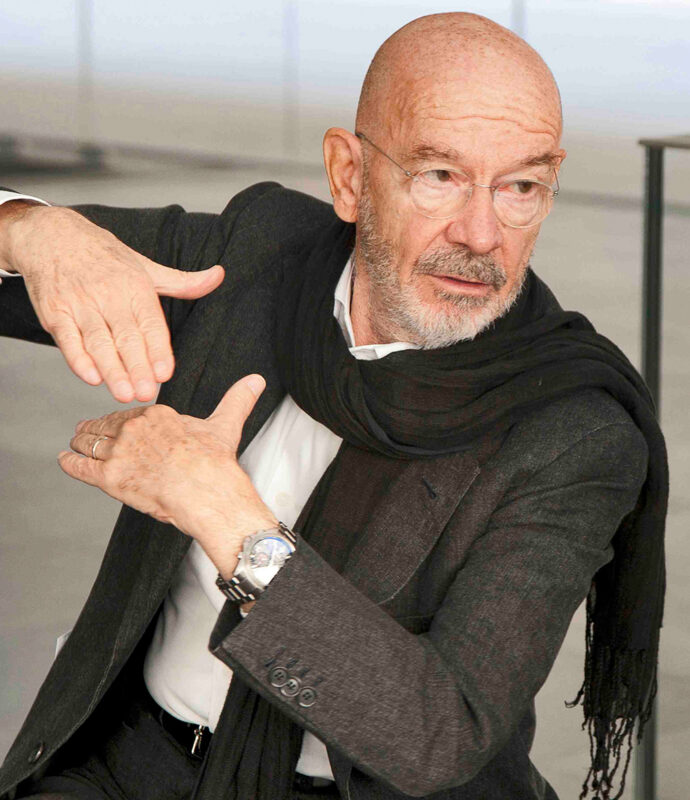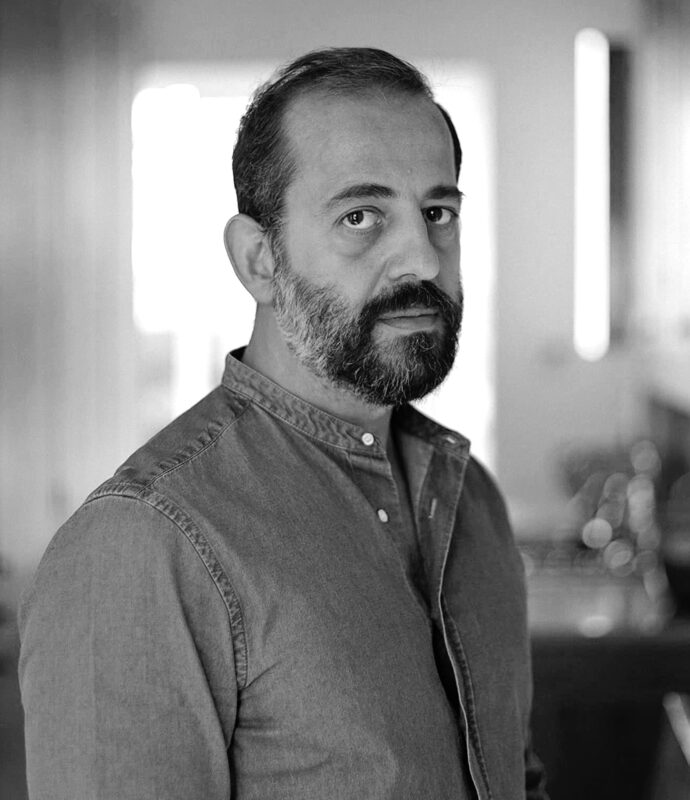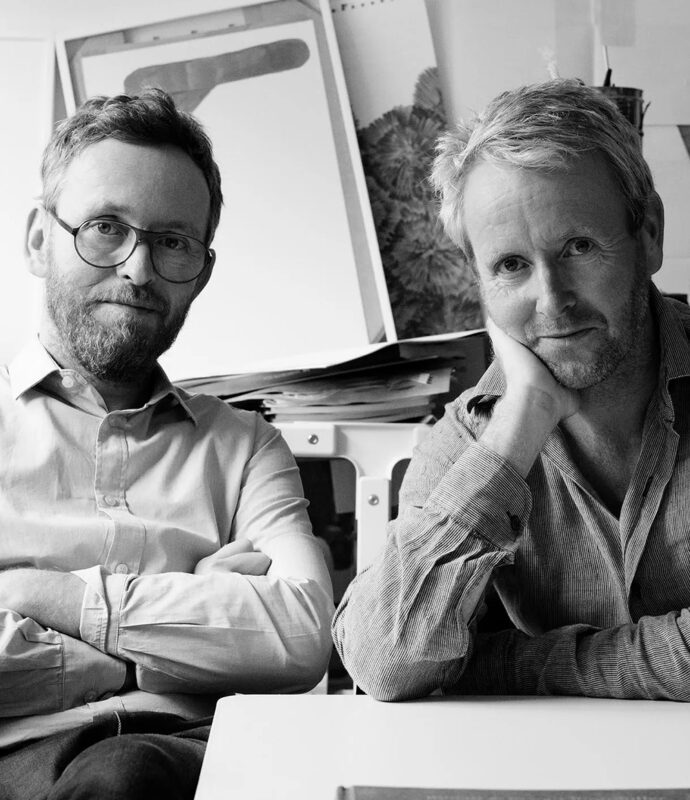Throughout the twentieth century, women pioneers of modern design left their mark on the history of design, creating original and impressive works.
Known for their designs that stood out in their own time, each of them made significant contributions to the evolution of art, architecture and interior design: Eileen Gray with her avant-garde and unconventional approach; Florence Knoll with her holistic design approach; Nanda Vigo with her interdisciplinary approach between art and design; Gae Aulenti with her free and visionary lines.
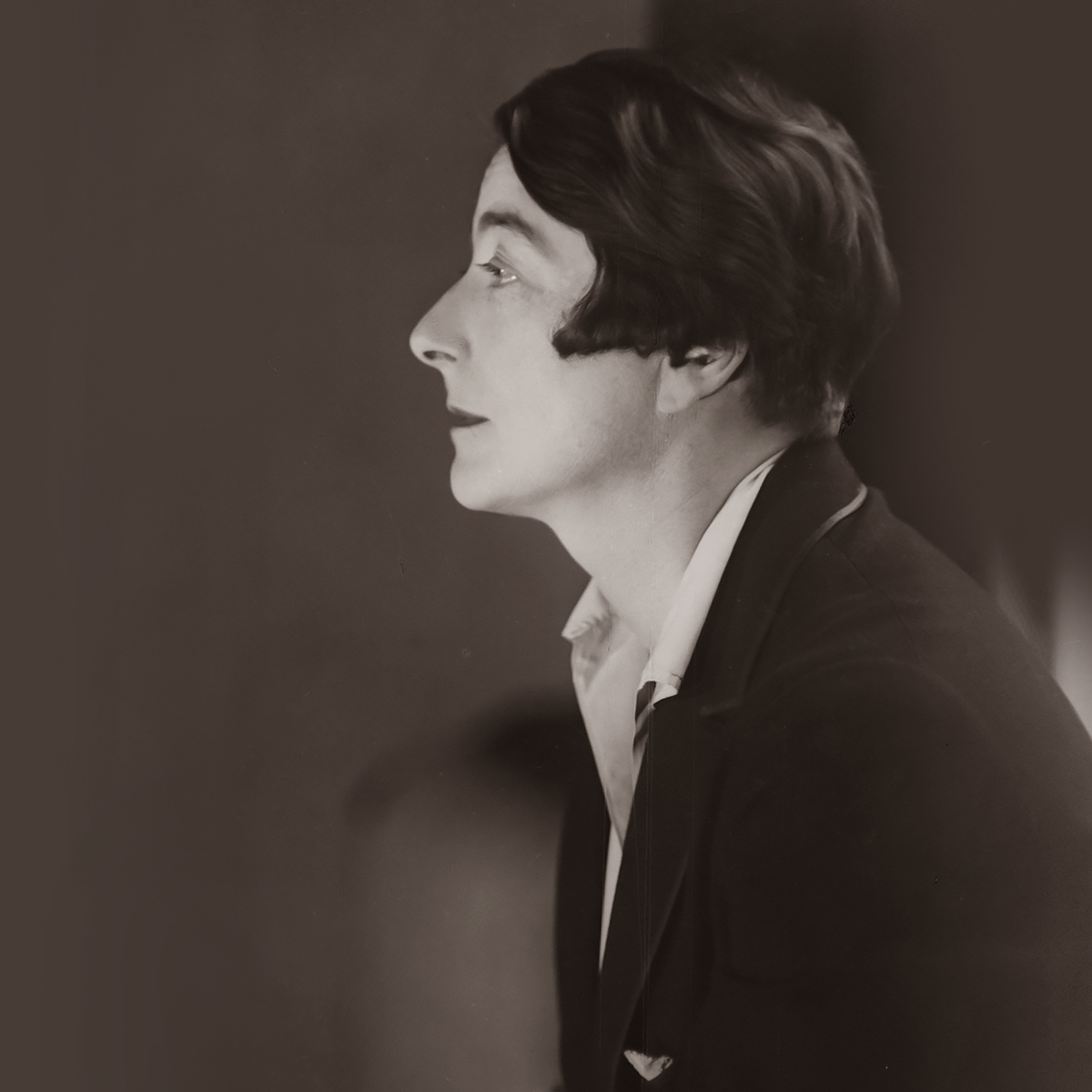 |
Eileen GrayLegacy of a Pioneer of Avant-Garde DesignEileen Gray Products |
|---|
Eileen Gray (1878 – 1976) was an Irish designer who spent most of her life in France and was known for her avant-garde design approach. Experimenting with the Art and Crafts and De Stijl movements in his early years, Gray gradually became a great advocate of Modernism.
From Art Education to the World of Design
Gray started his art education with painting and later learned lacquer making technique with the help of a furniture restorer friend. This experience led him to design his own furniture. With his avant-garde identity, he started to realize his extraordinary and original designs.
In the following years, Eileen Gray, who was also interested in architecture, continued her production in the fields of design and architecture with an interdisciplinary approach. This approach has made him a prominent figure in the world of design.
Bibendum Armchair and Other Iconic Designs
Honored in 2013 with a retrospective exhibition by the Centre Pompidou, Gray often used interesting and unexpected sources of inspiration in his designs. Inspired by Michelin tires, Bibendum Armchair is one of the prominent examples of this design approach. Today, Eileen Gray designs are produced by ClassiCon, along with other iconic designs such as the Adjustable Coffee Table and Day Bed.
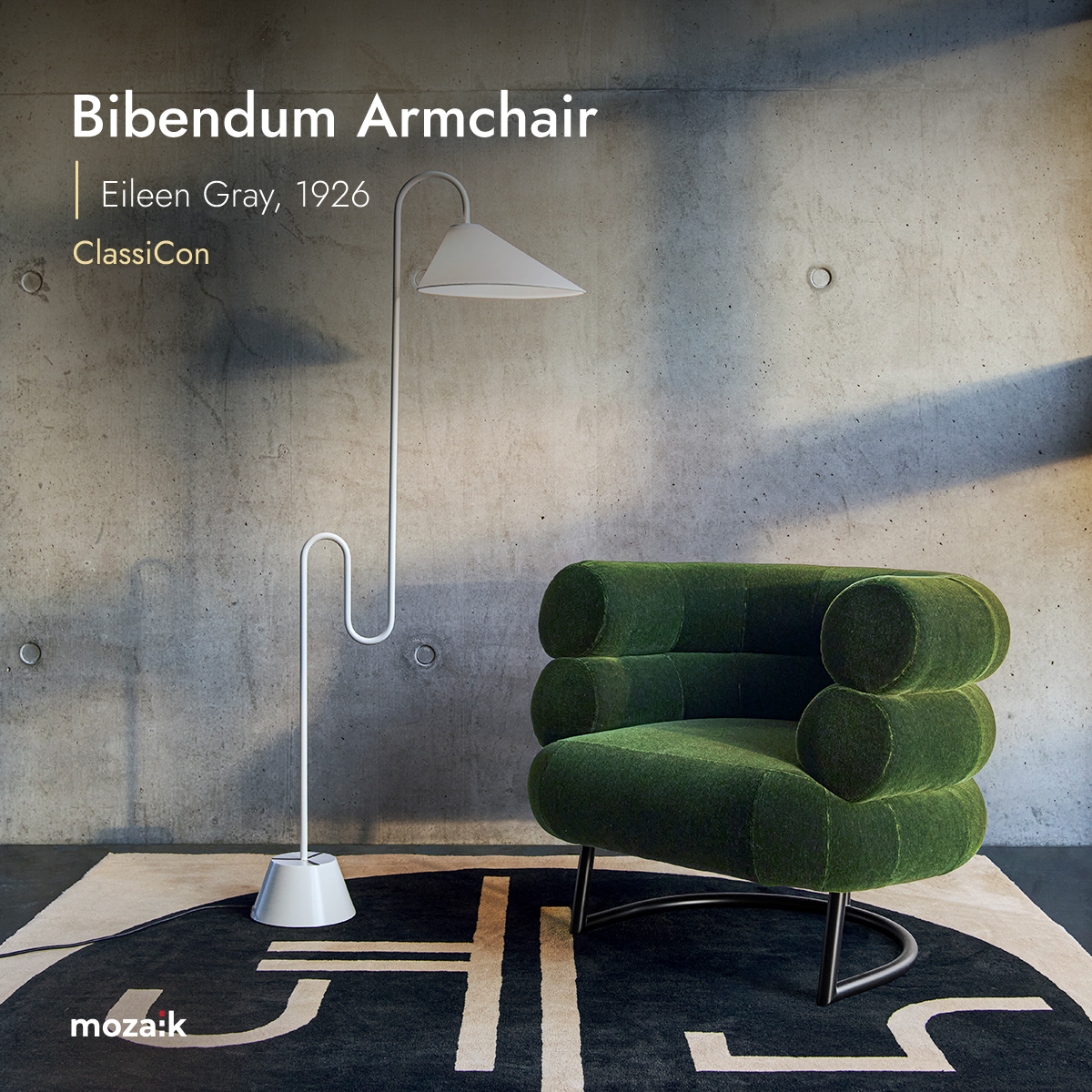 |
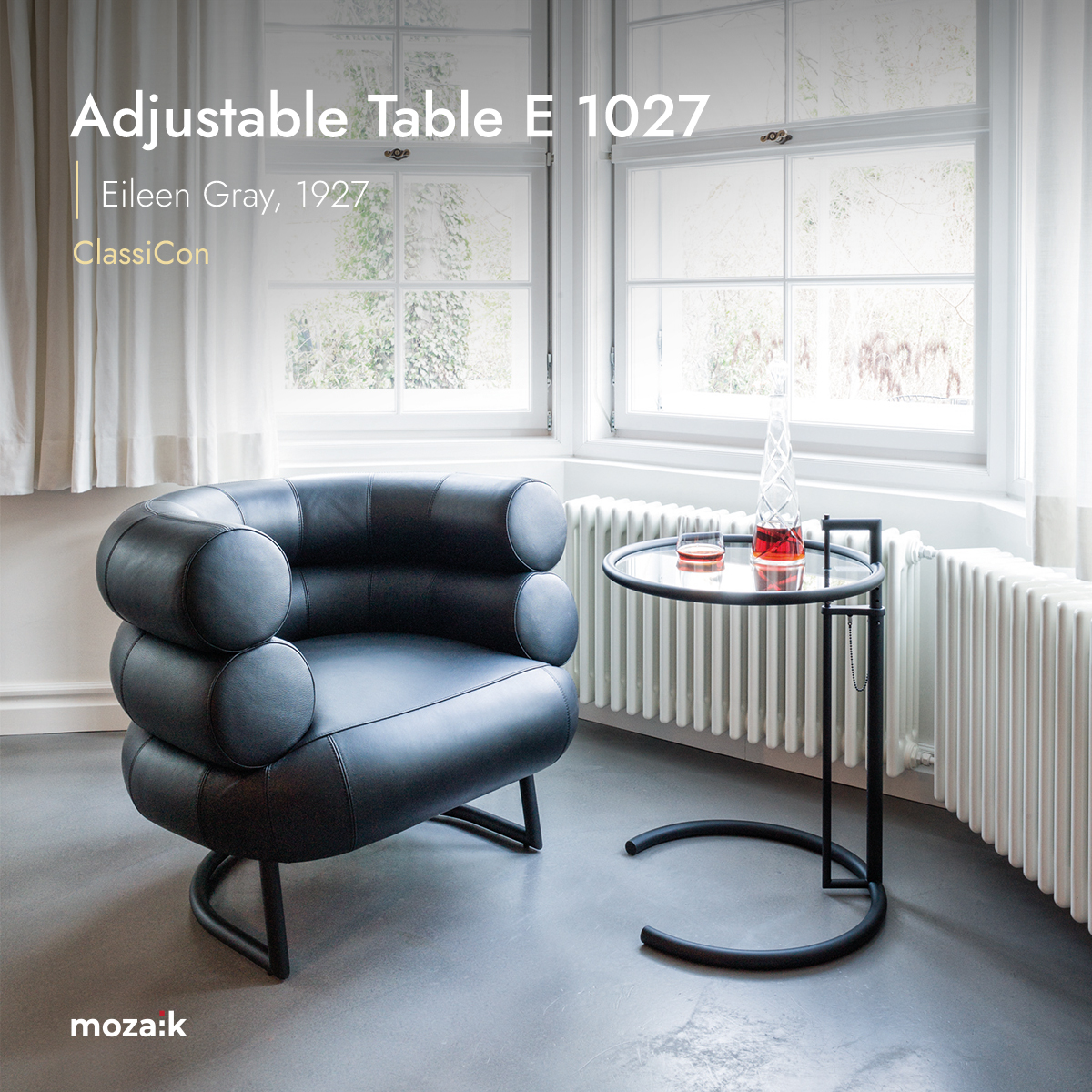 |
|---|
Eileen Gray’s avant-garde and original design approach contributed significantly to the evolution of modern design. Their designs still play an impressive role in the contemporary design world, combining aesthetics and function.
 |
Charlotte PerriandA Pioneer in Modern DesignCharlotte Perriand Products |
|---|
French designer Charlotte Perriand (October 24, 1903 – October 27, 1999) was attracted to the Art Deco style during her studies in interior architecture, but it was her meeting with Le Corbusier in 1927 that began a period that transformed her design career. Perriand collaborated with Le Corbusier and Pierre Jeanneret to design the LC series, now recognized as design classics. The highlight of this series is the use of modern materials such as aluminum and nickel finishes, pioneering modern design.
Innovative Designs: Mexique Coffee Table and Petit Bureau
Leaving Le Corbusier’s studio in 1937, Perriand embarked on a solo journey to explore contemporary technologies in interior design. Designed in 1938, the Mexique Coffee Table was developed for the student rooms in the Maison du Mexique department at the Cité Universitaire Internationale and is now part of the Cassina collection. At the same time, the Petit Bureau Desk, which he designed for his studio in Montparnasse in 1952, stands out as an example that combines traditional wood material with modern design.
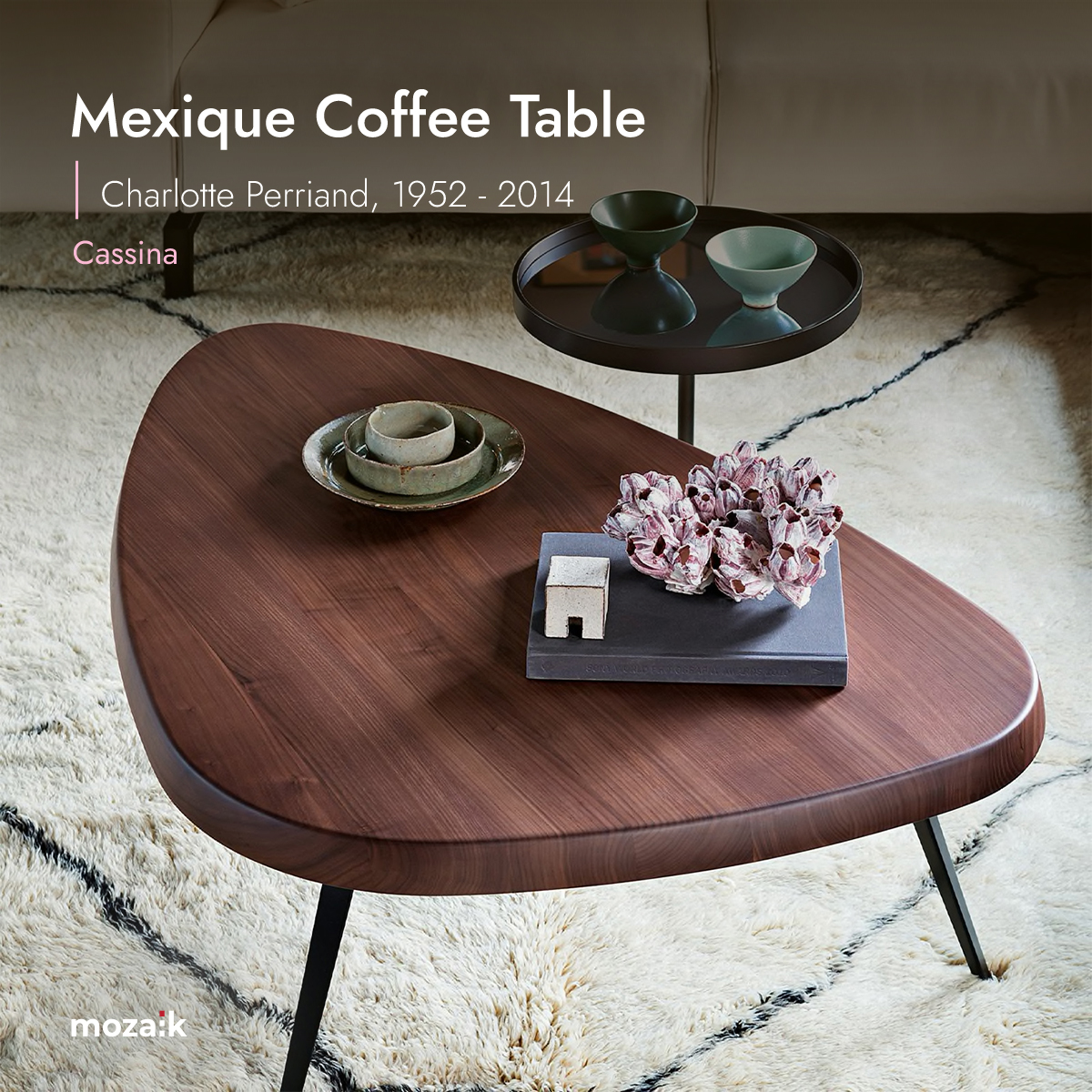 |
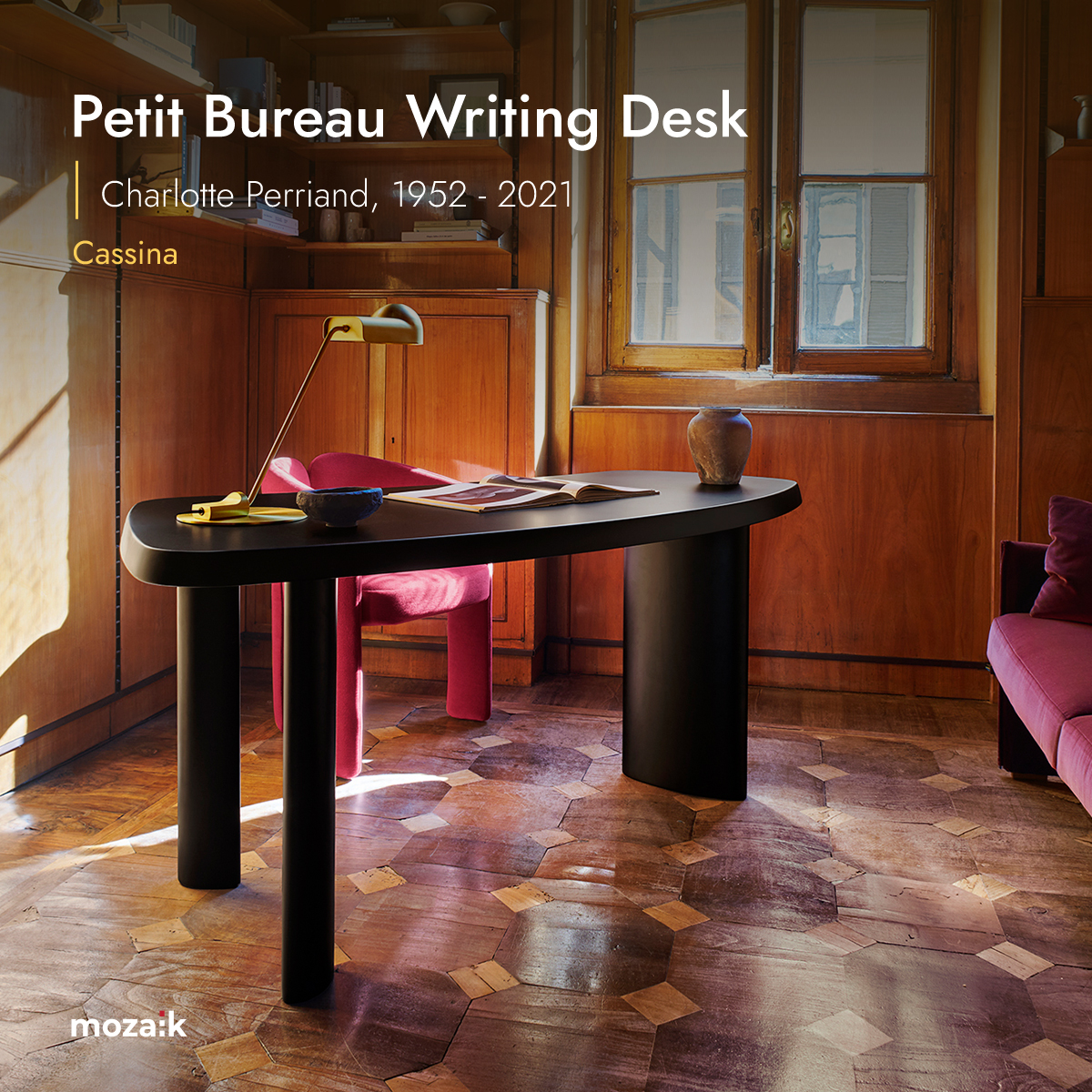 |
|---|
Tokyo Chaise Lounge Chair: Meeting Nature and Human Rationalism
His time in Japan during the Second World War inspired Perriand to think about the connection between human rationalism and nature. This idea led to the Tokyo Lounge Chair, which he designed in 1940. Made of bamboo, this chaise lounge combines organic forms with exceptionally fine wood craftsmanship. In 2011, Cassina added the Tokyo Lounge Chair to the iMaestri collection, bringing this unique design to modern living.
Charlotte Perriand is remembered as one of the pioneers of modern design, bringing an innovative and unique perspective to the world of design. His works are still a source of inspiration today.
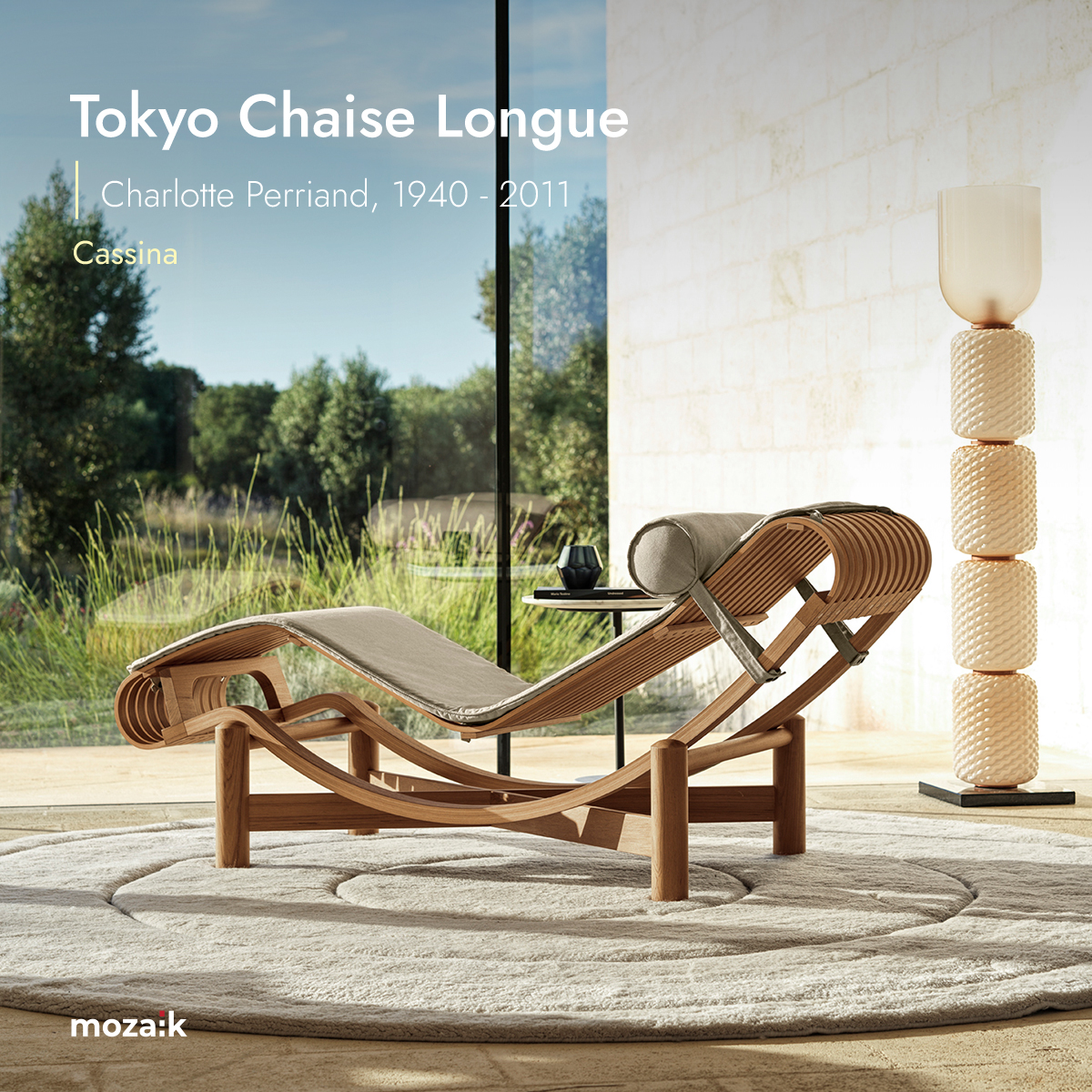 |
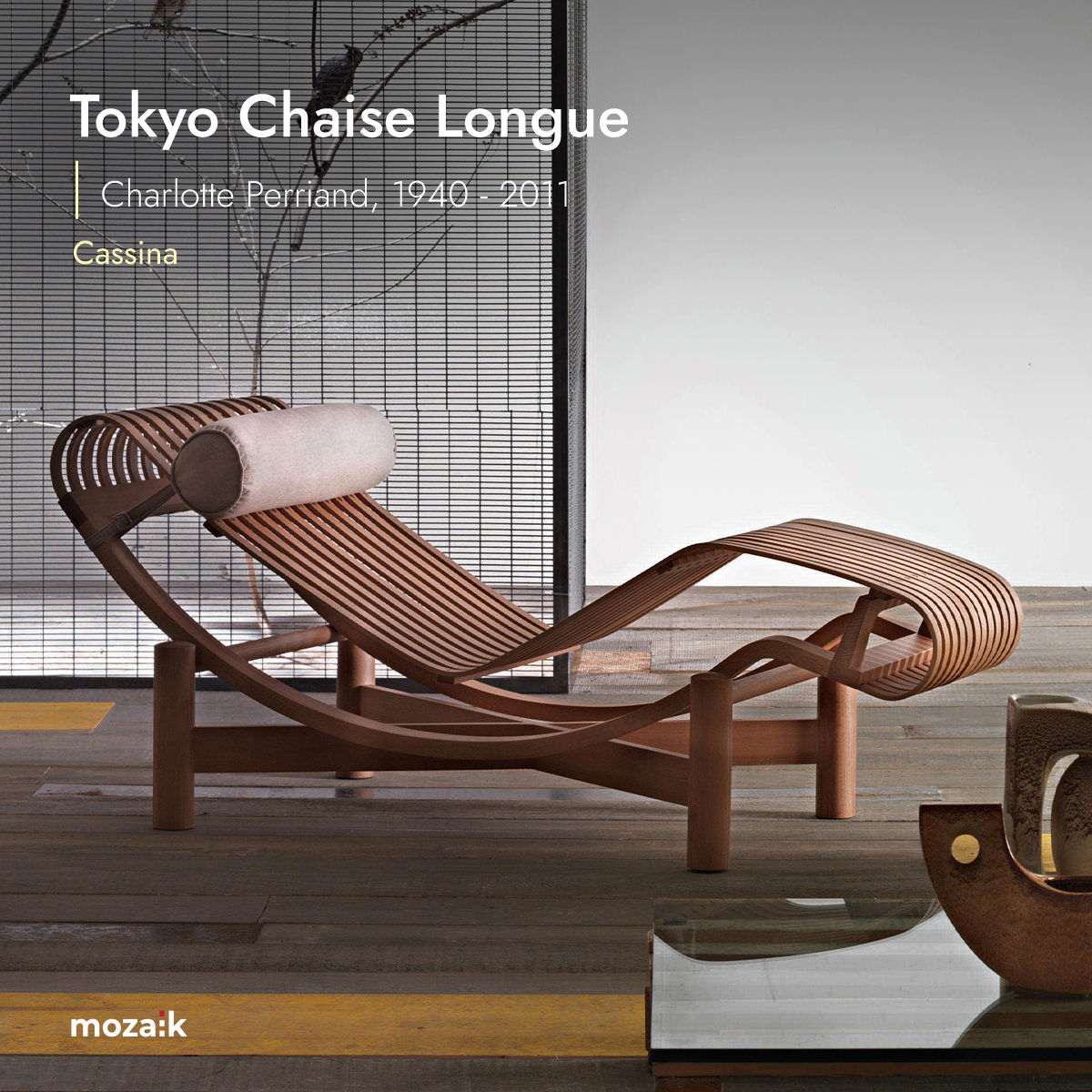 |
|---|
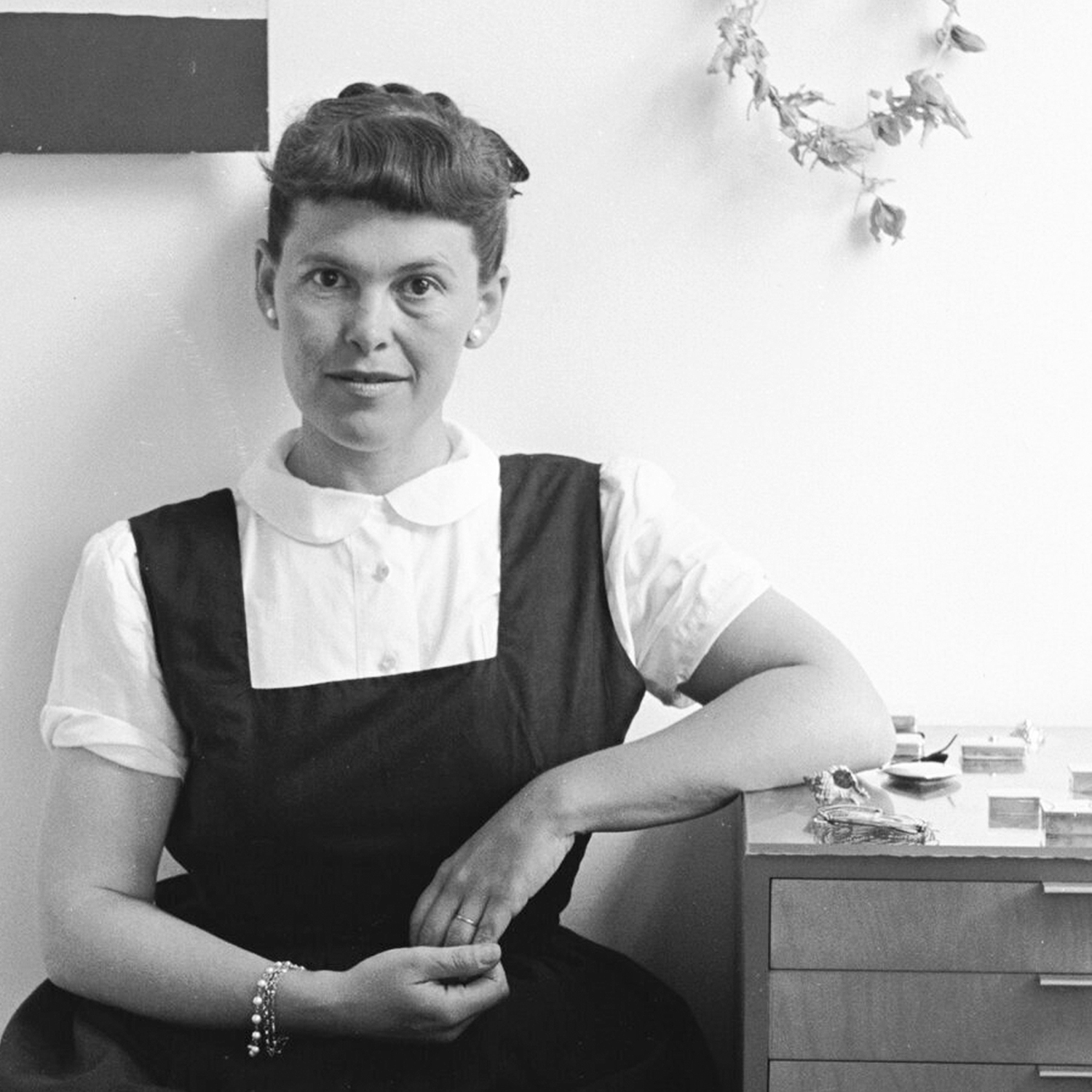 |
Ray EamesColor, Form and Eames LookRay Eames Products |
|---|
Ray Eames (December 15, 1912 – August 21, 1988), an influential figure in the world of art and design, began his artistic career in the studio of abstract expressionist painter Hans Hoffmann and shaped it with his interest in architecture. While studying at the Cranbrook School, he met Charles Eames, with whom he founded the Eames Office and worked on many different media and materials. Ray Eames’ sensitivity to form and color transformed his creativity into a source of success called the “Eames Look”.
Eames Office and Textile Designs
The textile designs of the Eames Office are the result of Ray Eames’ experience in abstraction and fashion design. For a competition held at the Museum of Modern Art in 1947, Ray Eames designed four textile patterns, two of which were produced during Charles and Ray’s lifetimes. Today, the Dot pattern produced by Vitra keeps Ray Eames’ design aesthetic alive.
 |
 |
|---|
The Eames Understanding of Design as a Way of Life
Ray and Charles Eames believed that design was not just a profession, but a way of life. They reflected this belief in every project. For example, in 1945, during plywood pressing experiments, they designed a group of animals for children to sit on. Two prototypes were exhibited at the Museum of Modern Art in 1946, and with this design they captured the form of the elephant they admired.
Ray Eames’ influence in the world of art and design has been shaped not only by his aesthetic sensibility and creativity, but also by his belief that design can be part of everyday life. His legacy continues to influence today’s design, continuing the Eames Look.
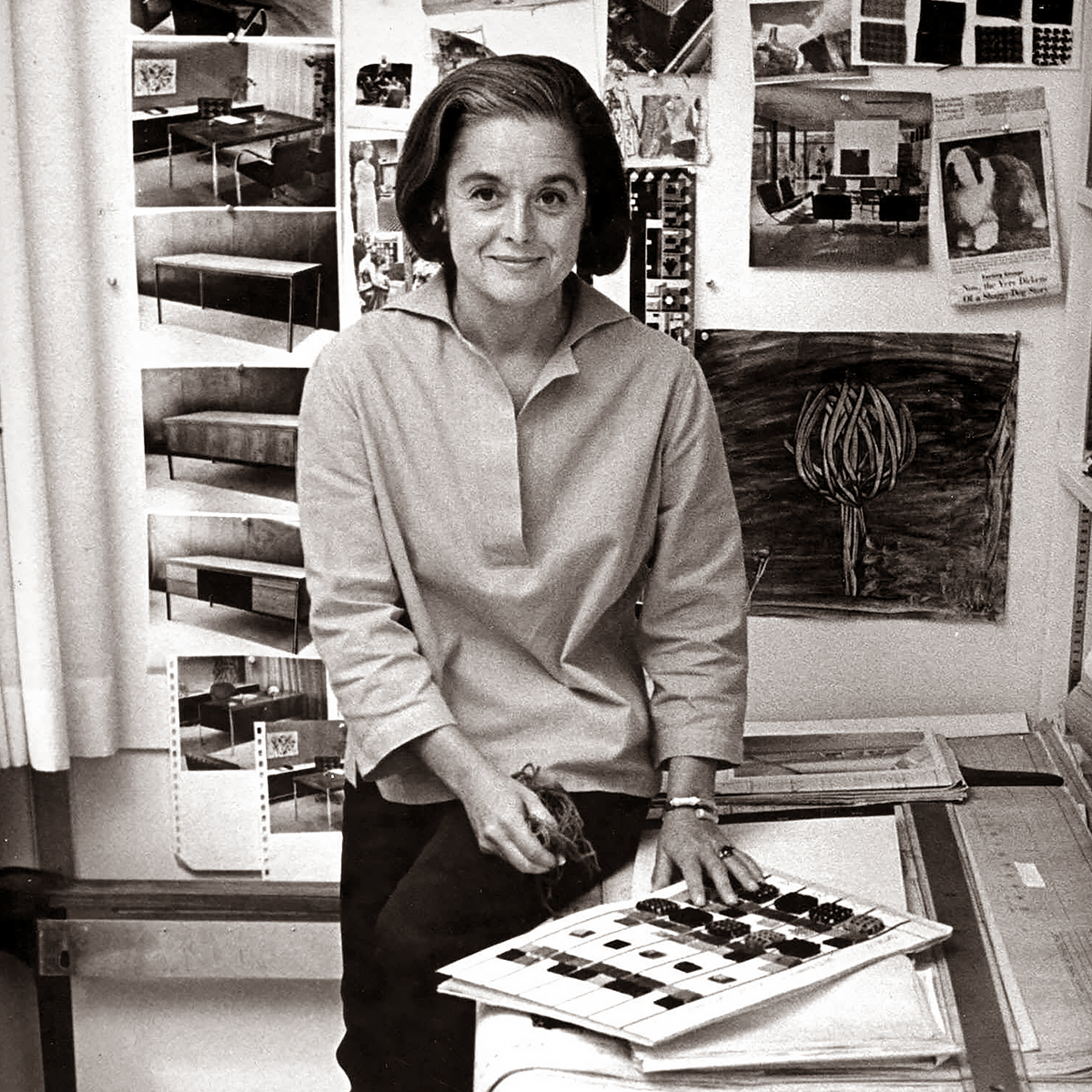 |
Florence KnollIcon of Functional and Aesthetic DesignFlorence Knoll Products |
|---|
Florence Knoll (May 24, 1917 – 2019) trained as an architect and designer, designing practical and aesthetic furniture and interiors that shape living and working spaces. Knoll, known for its belief in holistic and integral design, has taken into account all aspects of architecture, interior design and furniture design when creating the interiors.
Collaboration with the Giants of Architecture
With advice from Eliel Saarinen and Alvar Aalto, Florence Schust, 20. gained experience working with some of the greatest architects of the century. These experiences included studies in Cambridge, Massachusetts, with Walter Gropius and Marcel Breuer, and collaborations with Ludwig Mies van der Rohe at the Illinois Institute of Technology. Florence Knoll founded a furniture company in 1941 and met Hans Knoll the same year. Married in 1946, the couple combined Florence’s design flair with Hans’ business acumen and salesmanship to transform the company into an international authority on style and design.
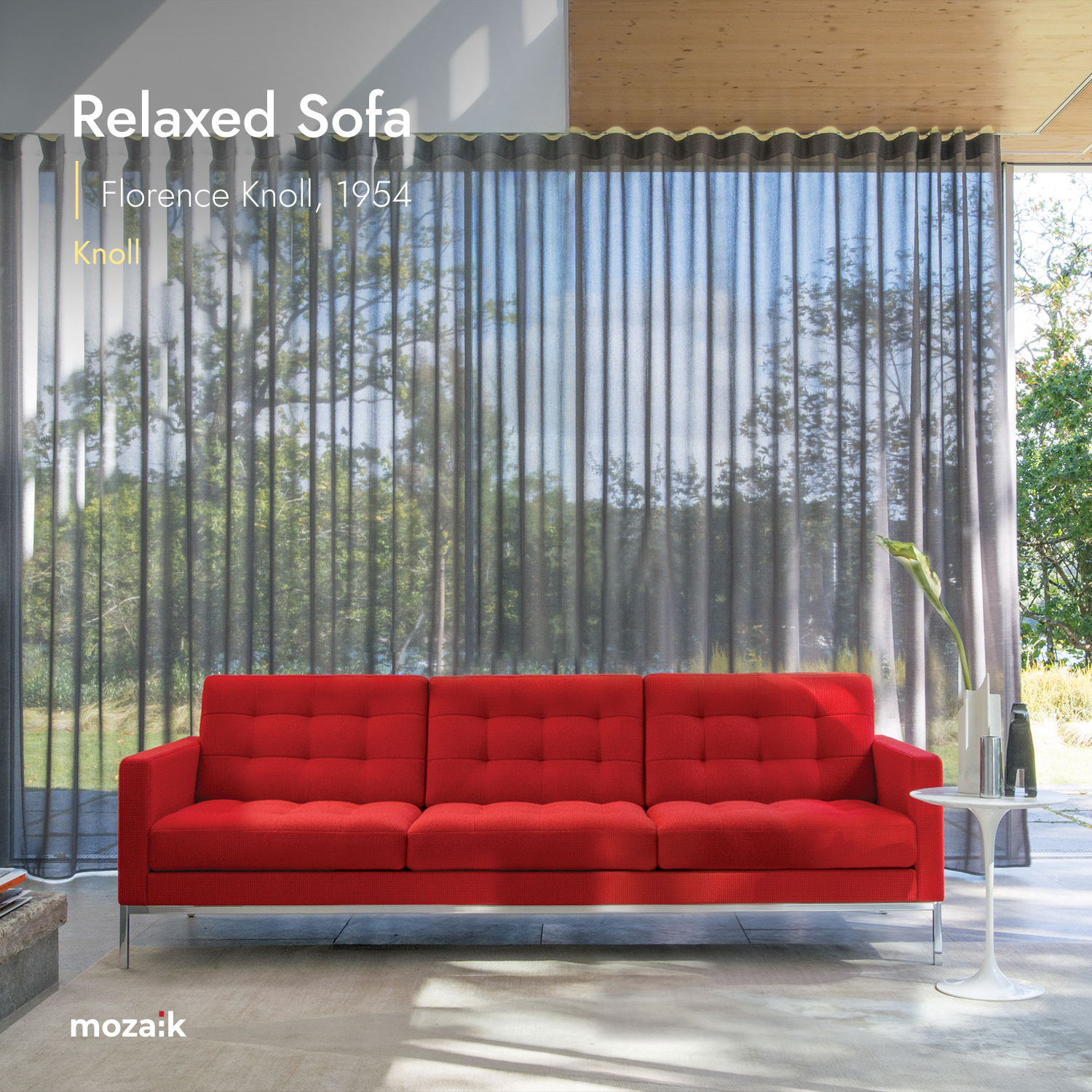 |
 |
|---|
Knoll Planning Unit: A Revolution in Interior Design
Florence Knoll set the standard for modern corporate interiors in post-war America when she created the Knoll Planning Unit. With his background in architecture, he brought modern concepts of efficiency, space planning and comprehensive design to office planning. Knoll stood out by not only decorating the space, but also creating it. By meticulously researching their clients, assessing needs, defining usage patterns and understanding company hierarchies, Florence and the Planning Unit have designed interiors for some of America’s largest companies, including IBM, GM and CBS. Embracing the principles of modernism and beautifully executing the Knoll style, Florence Knoll became an icon in the world of design.
Florence Knoll’s legacy celebrates the fusion of functional and aesthetic design and she is remembered as one of the pioneers of modern interior design.
 |
Gae AulentiFree Italian DesignGae Aulenti Products |
|---|
Gae Aulenti (December 4, 1927 – October 31, 2012), the most renowned Italian female architect of her generation, produced an impressive body of work throughout her lifetime in a variety of disciplines including furniture, stage, lighting and interior design. Not only has it strengthened the image of Italian design, but it has also made an important contribution to the international panorama of industrial design.
Reaction to the Neoliberty Movement: Locus Solus Series
He started his architectural career in the 50s and continued with the Neoliberty movement as a reaction to Modernist Rationalist Architecture. Designed in 1964, the Locus Solus series is one of the most important examples of this movement and is now produced by Exteta.
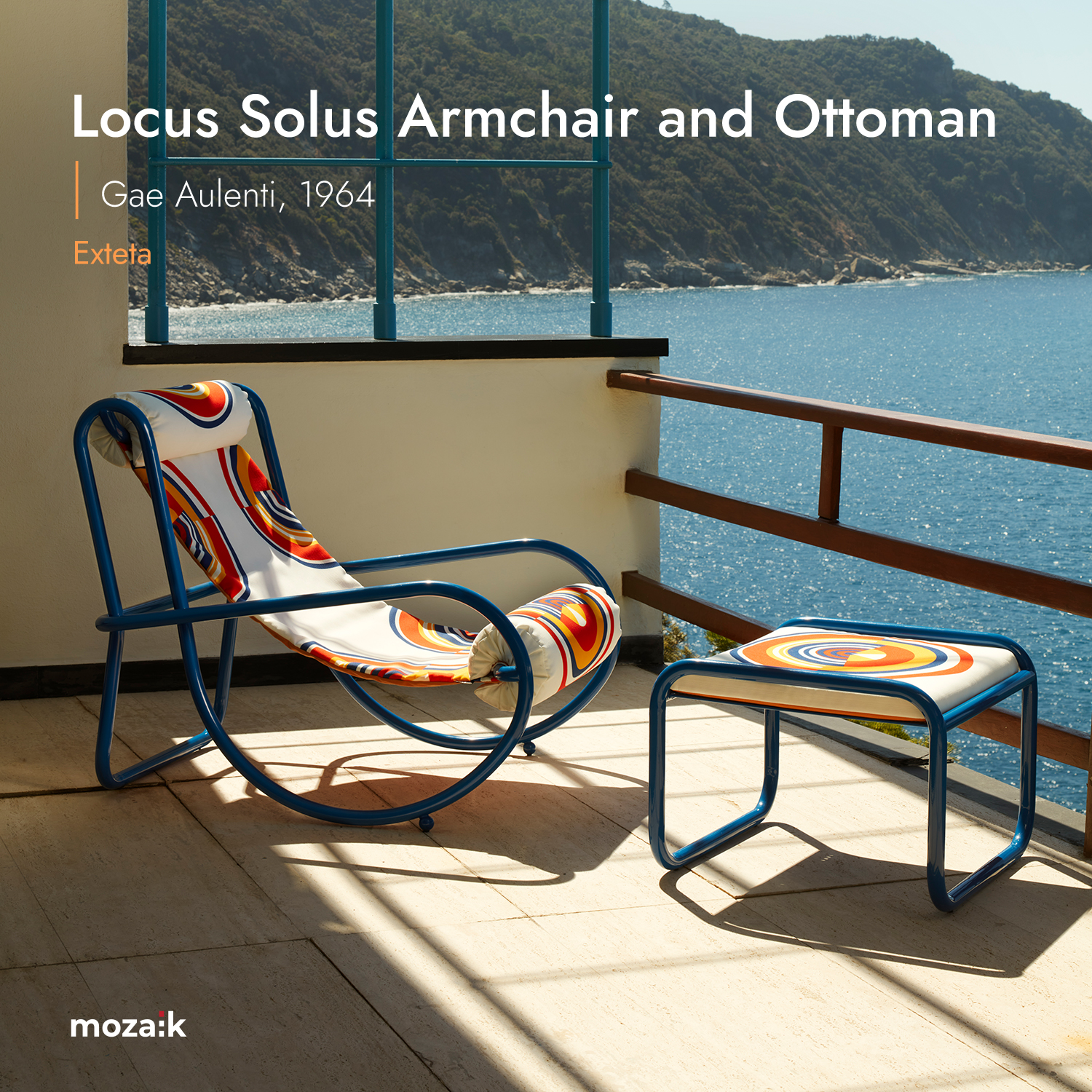 |
 |
|---|
Iconic Pipistrello Table Lamp
The iconic Pipistrello table lamp, created in 1965 for the Olivetti Showroom in Paris, brought Aulenti international recognition. Designed entirely using innovative moulding techniques, this lamp is characterized by Art Nouveau lines and has been mass-produced by Martinelli Luce.
Fontana Arte and Design Leadership
In 1979, Aulenti became artistic director of Fontana Arte, a leading Italian manufacturer of furniture and lighting. He revitalized the company by directing it to focus on glass production and collaborated with many important designers. In 1980, the Parola Lamp, which he designed with Pier Giacomo Castiglioni, and Tavolo con Ruote, which he produced for Fontana Arte in the same year, attracted great attention at the time.
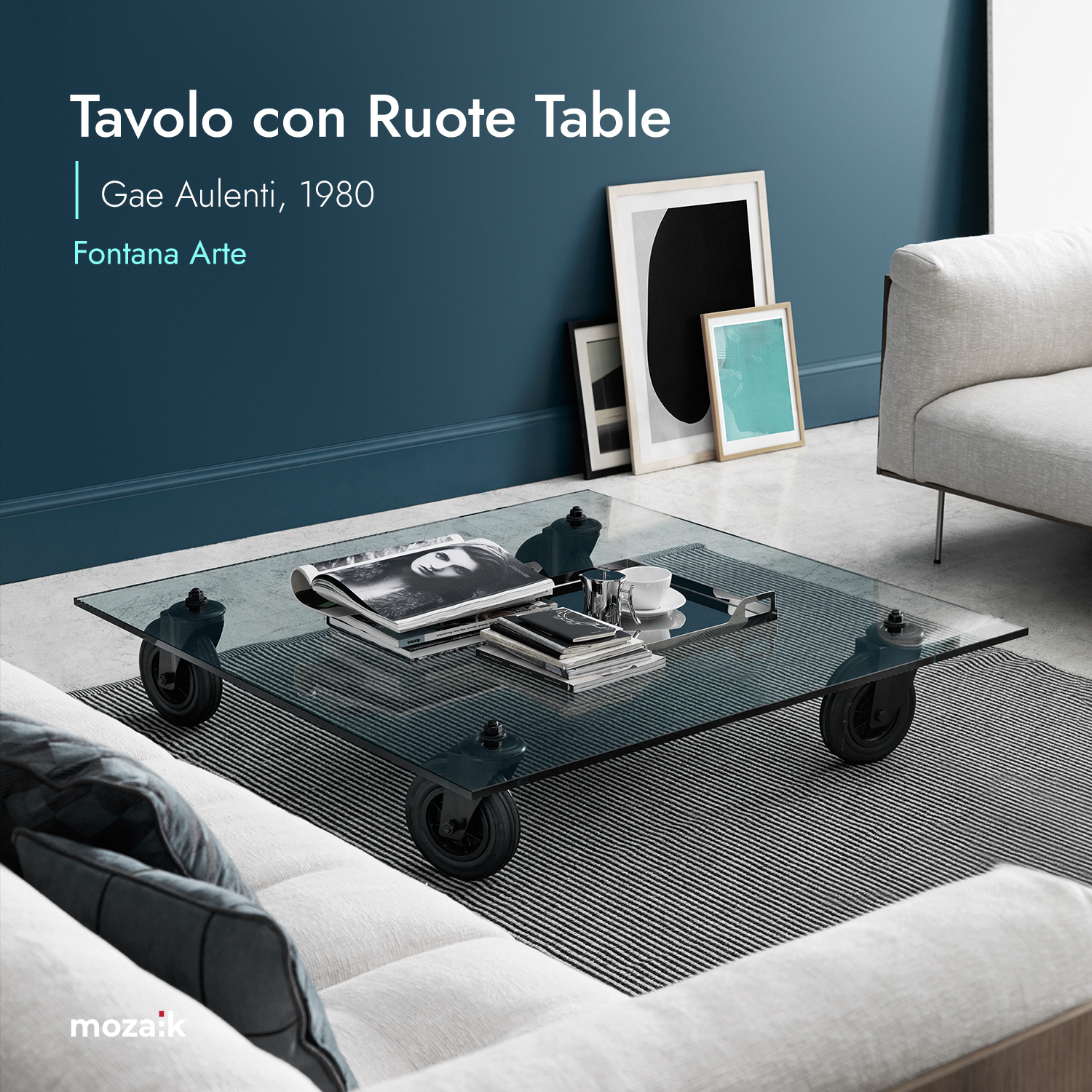 |
 |
|---|
Industrial Aesthetics Tavolo con Ruote
In the design of Tavolo con Ruote, Gae Aulenti was inspired by the use of simple carts that she noticed while visiting Fontana Arte’s factory. He mounted the square, fifteen-millimeter-thick glass panel on four 360-degree rotating rubber wheels. The nuts and bolts, deliberately left visible, emphasized the industrial aesthetic of the table.
Gae Aulenti’s work has had a profound impact not only on Italian design but also on the international design scene. His creativity and pioneering spirit is still felt in the design world today.
 |
Nanda VigoInterdisciplinarity in Art, Design and Architecture |
|---|
Nanda Vigo (November 14, 1936 – May 16, 2020) was an artist, designer and architect who had an impressive career combining art, design, architecture and environment. Vigo’s interdisciplinary work distinguishes his career from his contemporaries through his deep interest and research in art. His passion for collaborating with leading figures of his time and promoting the arts has made Vigo unique.
Due Più: A Unique Meeting of Art and Design
Designed in 1971 and a reflection of Nanda Vigo’s creativity, Due Più Armchair stands out as a surprising and enigmatic object that draws attention with the use of two cylinders with two ends in the air. Due Più, reintroduced by Acerbis in 2023, is aligned with the principles of the circular economy by using furs derived from food industry waste, in line with contemporary ethical guidelines.
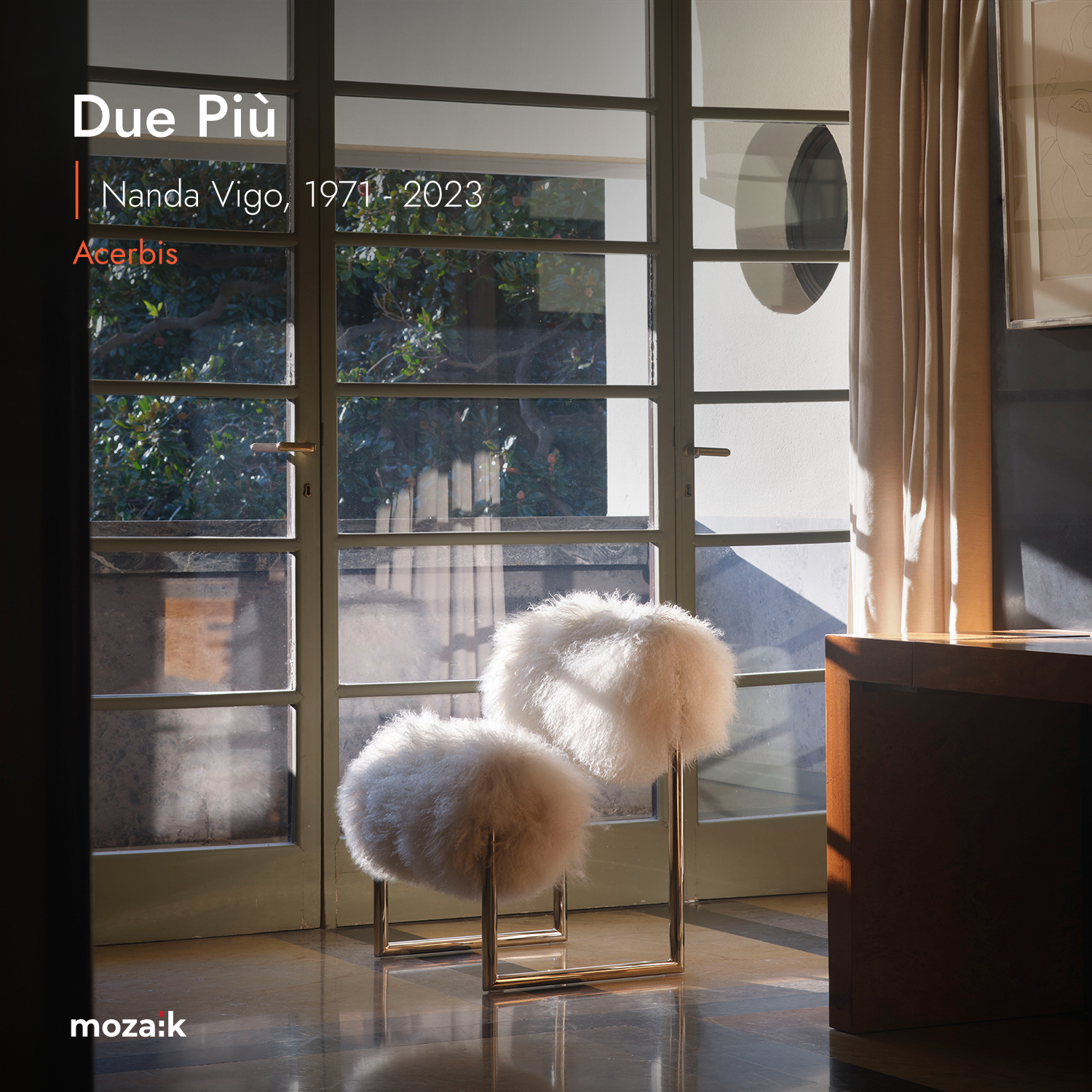 |
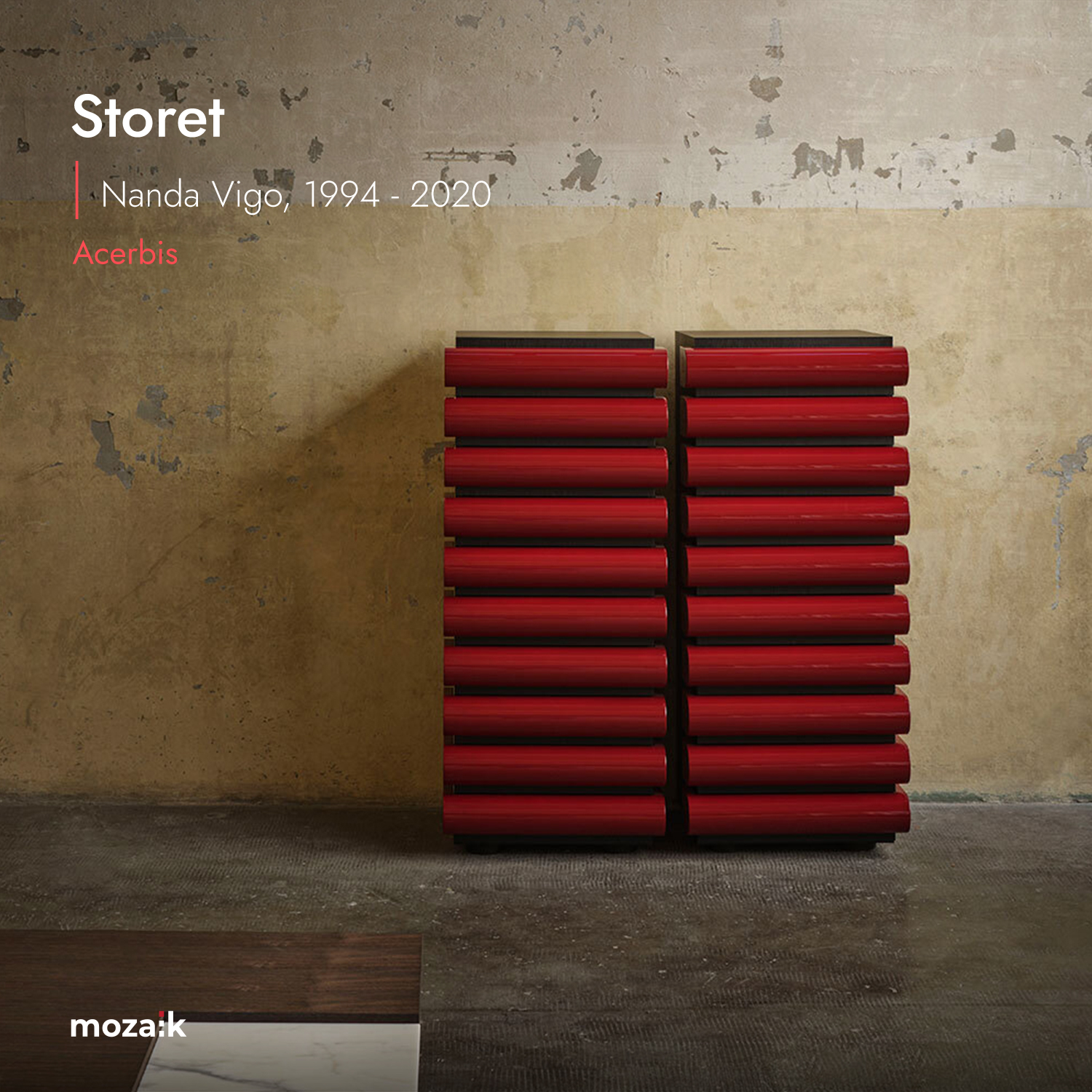 |
|---|
Storet Wardrobe Vigo’s Visionary Touch
Storet Cabinet, a playful and cheerful drawer unit, symbolizes the visionary touch of Nanda Vigo’s designs. With its long vertical version and its bedside table, designed by Vigo but never before produced, Storet brings a modern expertise to Acerbis’ large wooden surfaces, using the visible texture of walnut. This design successfully combines Vigo’s aesthetic sense and Acerbis’ expertise in wood.
Nanda Vigo’s work not only transcends the boundaries of an artist, designer and architect, but also stands out for its embrace of contemporary design principles. His legacy is a source of inspiration that brings the power and aesthetics of art to the world of design.
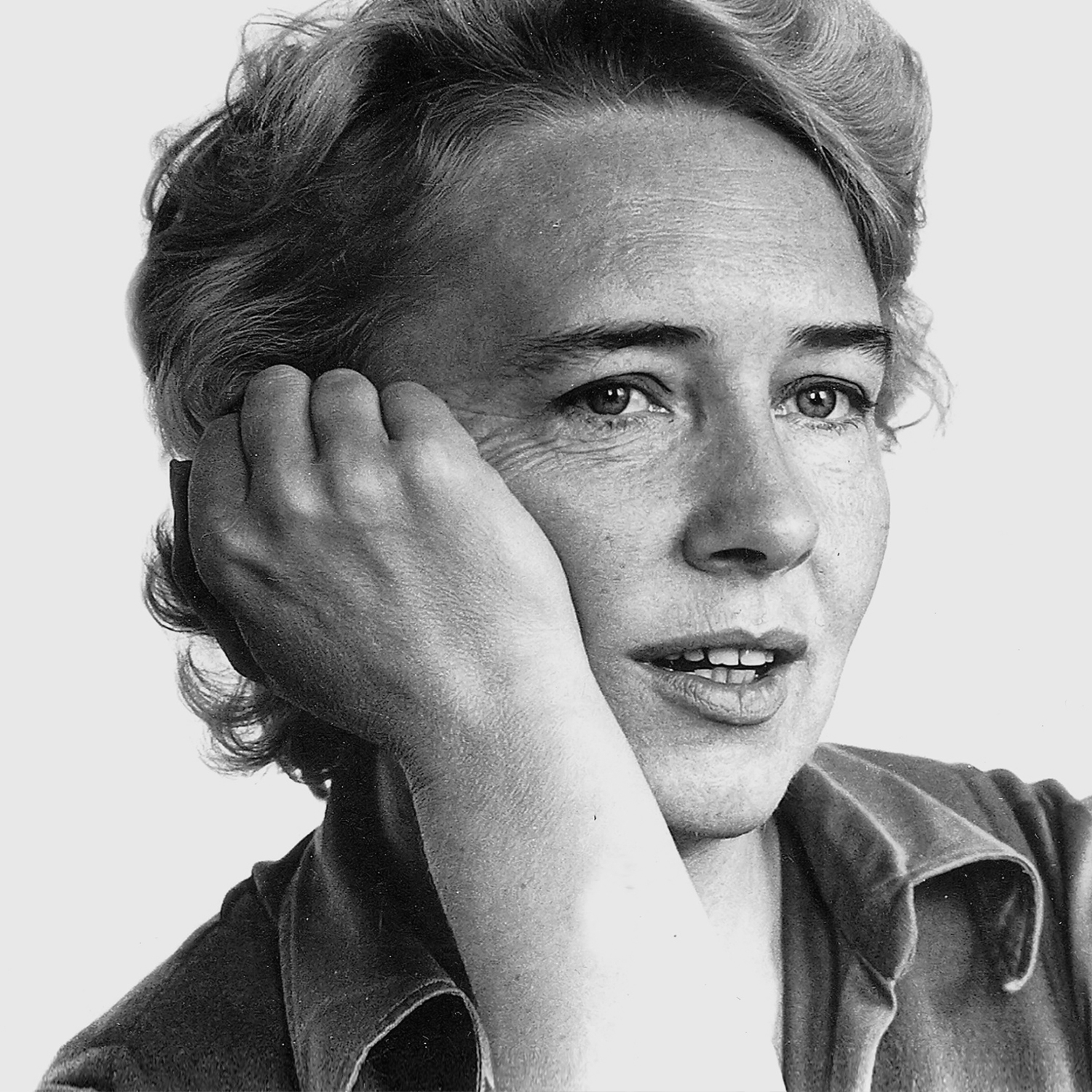 |
Bodil KjærModern Visionary of Danish ModernismBodil Kjær Products |
|---|
Bodil Kjær is a Danish architect, urban planner and designer with a unique insight into the deep relationship between design and architecture. Born on March 11, 1932, Kjær was inspired early in his career by the Modernist masters Mies van der Rohe and Marcel Breuer.
Innovative Representative of Danish Modernism
Instead of a sculptural approach to interior and furniture design, Kjær has adopted the basic elements of Danish Modernism. Functionality, artisanal craftsmanship and modernist aesthetics are the main components of his design approach. Calling this unique approach “Architectural Elements”, Kjær aimed to provide unique solutions for people engaged in creative work in the 50s and 60s by creating open and flexible workspaces and functional furniture for everyday life.
Iconic Office Desk: The Pinnacle of Modernity
In 1959, Kjær, who found office furniture cumbersome and restrictive, made a breakthrough in the world of design with the Office Desk, which he launched in the same year. Timeless, minimal and dazzling with its modern lines, this table is now produced by Karakter. This iconic table, seen in the first three James Bond films, was dubbed the “James Bond Table” in popular culture. Office Desk is a leading example of Danish Modern design principles.
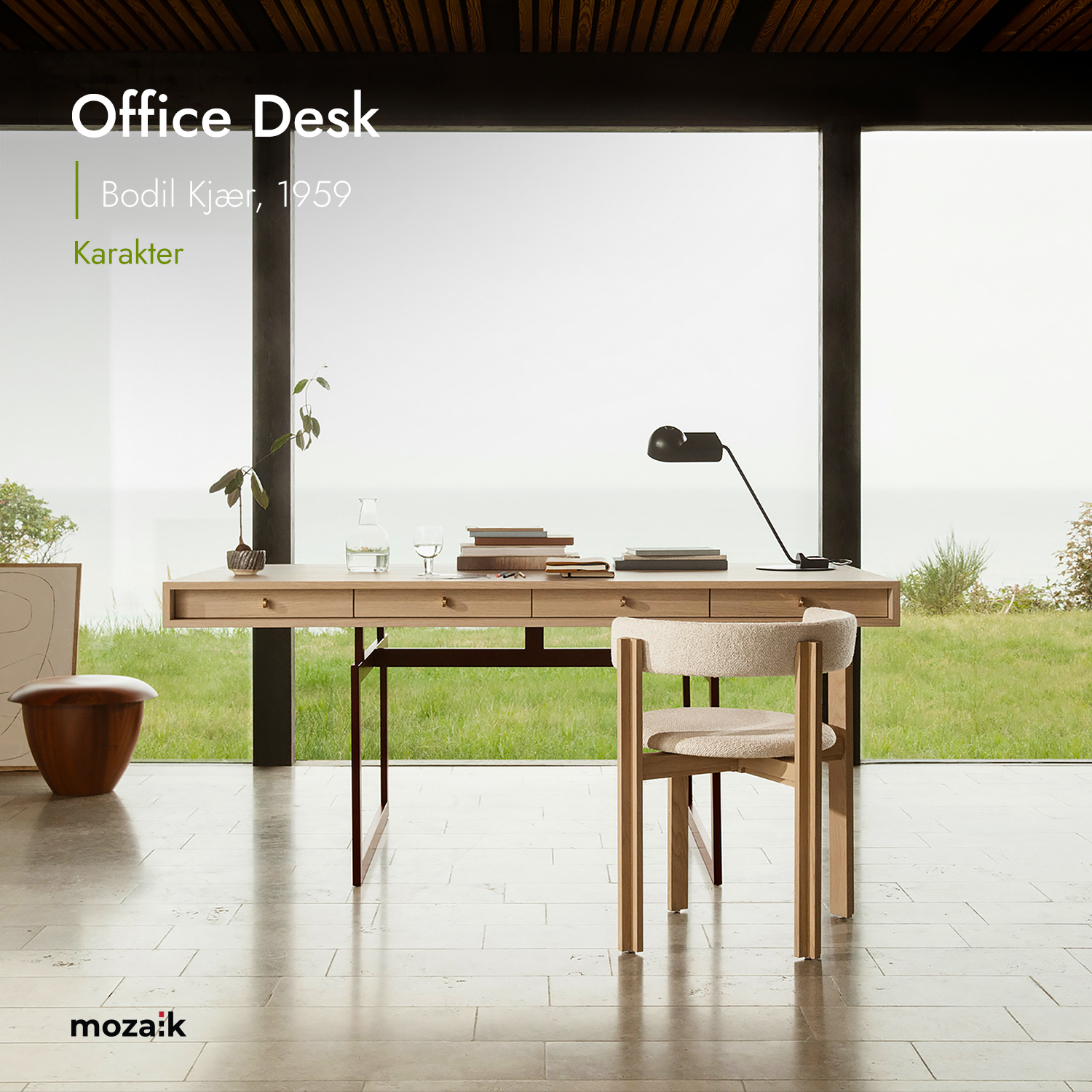 |
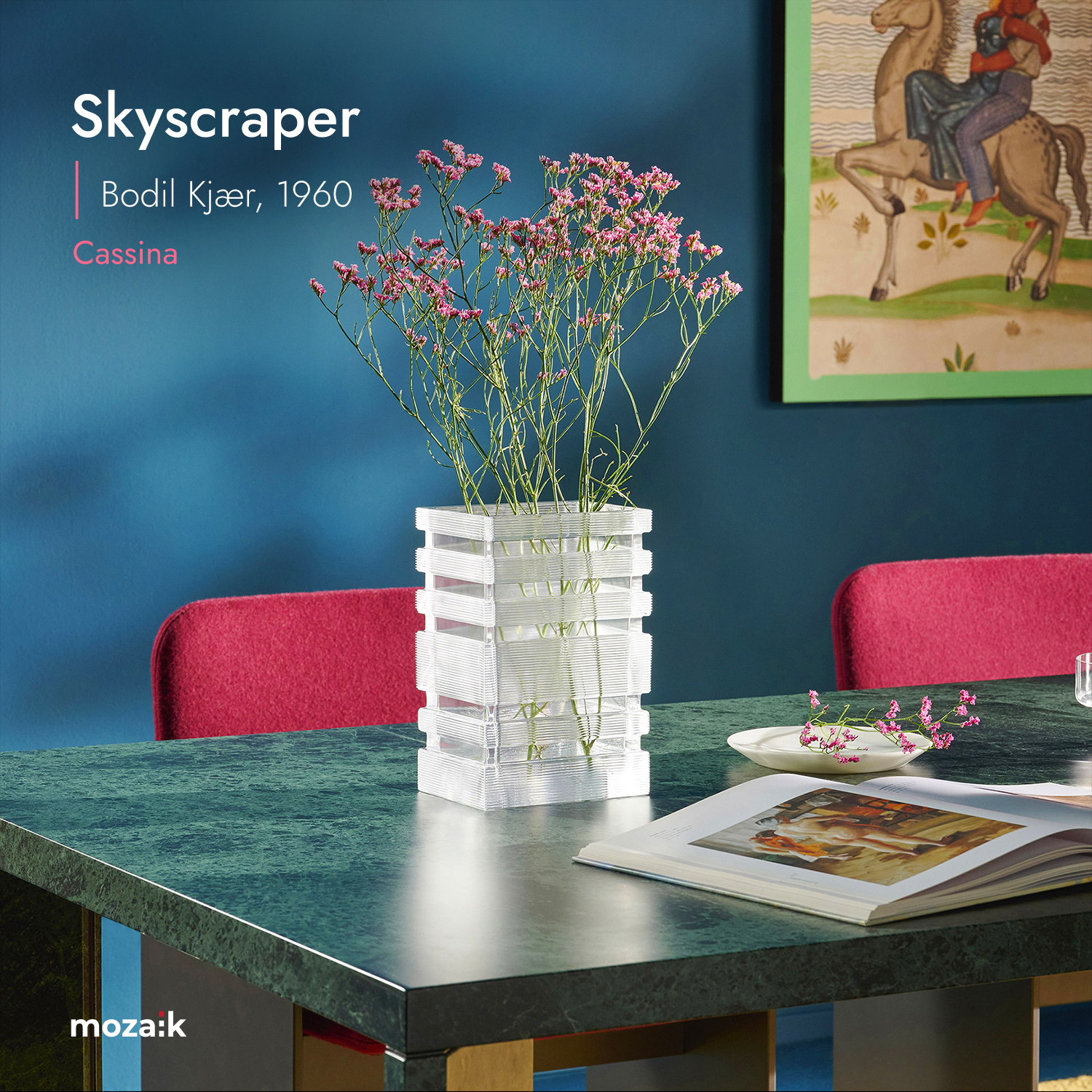 |
|---|
Skyscraper Vase Inspiration from Architecture
Kjær’s Skyscraper Vase, designed in 1960, was inspired by architecture. Influenced by iconic skyscrapers, the elegant form of the vase captures the spirit of soaring structures that symbolize urban landscapes and human ingenuity.
Bodil Kjær is one of the leading representatives of Danish Modernism, leaving an impressive mark on the world of design. His work continues to influence the world of modern design today with its functionality, aesthetics and innovative approach.



